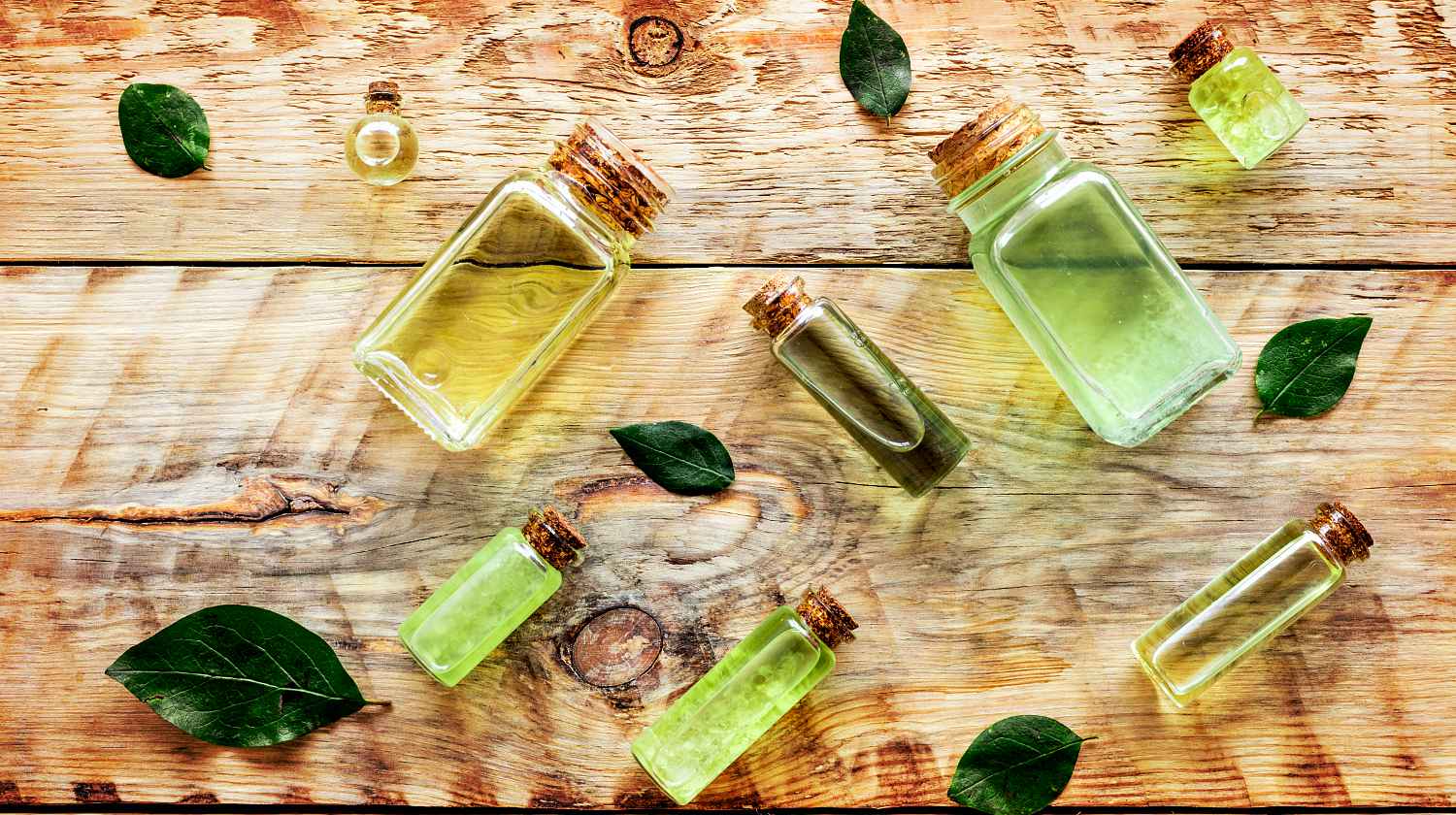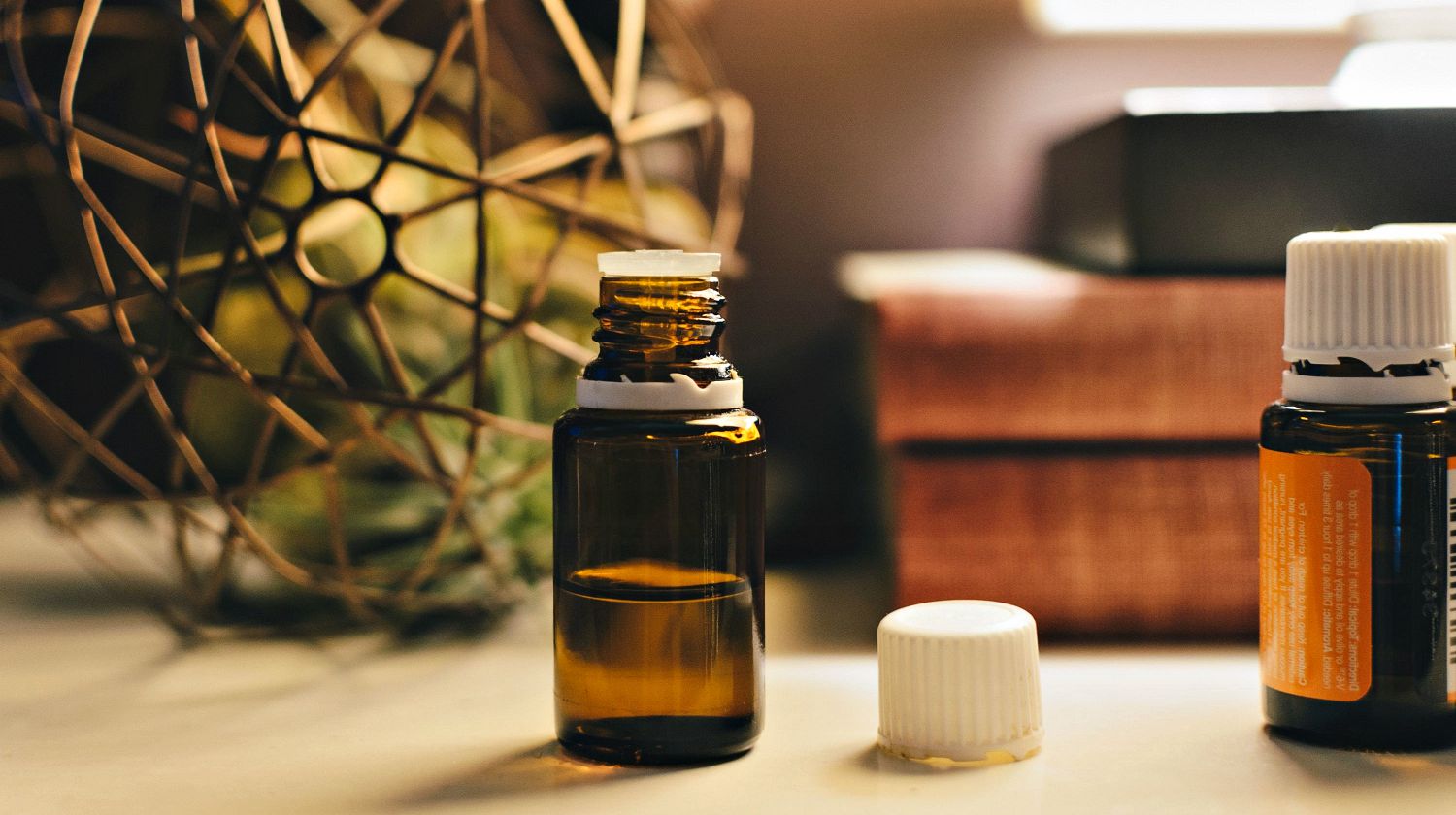Featured Articles
80 Tea Tree Oil Uses | Essential Oils For Survival

Know the variety of wonderful tea tree oil uses and benefits especially for your survival, here!
RELATED: 3 Medicinal Essential Oils Your Medical Kit Should Always Have
Tea Tree Oil Uses Survivalists Should Know
Essential Oils and Tea Tree Oil for Survival
People used essential oils for healing and medicinal purposes for many centuries now. Most certainly long before we had pills, capsules, and big pharma to take care of our medical woes.
And while there is a place for manufactured pharmaceuticals in our survival medicine kit, there exists the possibility of supplies running out. In such cases, they should be reserved for only the direst of circumstances and sometimes, sadly, comes with a cost.
It is even worse in survival situations of post-apocalyptic proportions where supplies are totally cut off. To get these meds, you need to scavenge or risk your life to get them.
For this reason, many preppers and individuals seeking self-reliance are learning to use essential oils to manage both routine and not-so-routine maladies that occur in daily life.
There are about a dozen or so essential oils that belong in every survival kit. This includes lemon, peppermint, lavender, clove, rosemary, and Melaleuca or tea tree among others.
All of these essential oils have healing properties but today I would like to focus on just one, tea tree oil.
A Brief History Of Tea Tree Oil
It is believed the Aborigines of Australia have been using the leaves of the indigenous Melaleuca Tree (whose leaves are used to make tea tree oil) in their medications for centuries.
They inhaled the oils from the crushed leaves to treat coughs and colds, sprinkled crushed leaves on their wounds and used an infusion of soaked leaves to treat sore throats or skin ailments.
Use of the oil itself, as opposed to the unextracted plant material, did not become common practice until researcher Arthur Penfold published the first reports of its antimicrobial activity in a series of papers in the 1920s and 1930s. In evaluating the antimicrobial activity, he found tea tree oil was 11 times more active than phenol.
The commercial tea tree oil industry was born shortly thereafter although interest in tea tree oil ebbed after World War II. This is presumably due to the development of effective antibiotics and the waning image of natural products.
Interest was rekindled in the 1970s as part of the general renaissance of interest in natural products.
80 Uses of Tea Tree Oil for Survival
For thousands of years, the derivatives of the Melaleuca Tree have been effective in treating a wide variety of ailments. Here are 80 reasons why you should use it, too!
1. Abrasions and Minor Cuts
After cleaning the area well, apply a few drops of the oil directly. If a bandage is needed, allow a few drops of the oil to penetrate a cotton ball, then lay it face down on the wound with a bandage on top.
2. Tea Tree Oil Acne Treatment
Add a drop to your normal cleansing routine or dab a very small amount on acne breakouts.
You can also add 20-40 drops of the oil to your regular face wash.
3. Air Freshener
Keep a supply of cotton balls soaked in tea tree oil packed away in a plastic bag or tin. When confronted with foul smells from cooking, musty orders from dampness, or even the medicinal smell in a sick room, take a few out the freshen the air and remove the nasty smell.
4. Allergies
Use topically by massaging into the chest, abdomen, or the reflex points of the feet.
5. Arthritis
To help reduce pain associated with the swelling of arthritis, add 20 drops of tea tree oil to two ounces of grapeseed or other carrier oil. Massage into the affected area two to three times a day.
6. Tea Tree Oil Remedy for Asthma
Add a few drops of oil to a pan of water and heat on the stove.
|
When cooling, drape a towel over the head, and breathe in for a few minutes.
7. Athlete's Foot
Clean feet thoroughly, especially between toes. Add oil directly to feet every two weeks, dusting with corn starch after.
You can also add 10 drops of oil to a tablespoon of grapeseed or other carrier oil and massage on your feet and between your toes daily.
8. Baby Care
Keep your diaper pail clean and fresh with a spray of tea tree oil mixed with water.
9. Bacterial Infections
Use topically, either massaging into the reflex points of the feet, adding several drops to a bath or cautiously applying over an infected site.
10. Bad Breath
Rinse with an ounce of water and a drop of tea tree oil. Do not swallow!
11. Bladder Infection
In a shallow bath, add 10 to 15 drops of oil. Sit and wash the area carefully.
12. Blisters
Wash the wounded area carefully, then directly apply tea tree oil to cuts and wounds.
13. Boils
Apply a warm washcloth for a few minutes, then apply a drop or two of oil to the area. The infection should rise to the surface and eventually be released.
14. Bronchial Congestion
Use as directed for Asthma. Add 5-10 drops to an ounce of carrier oil, and massage into the chest and throat two to three times daily.
15. Bronchitis
Add one to two drops to a pan of hot water and breathe in the steam or massage the oil over the chest.
16. Bruises
After icing, apply oil as directed for Arthritis.
17. Bunions
Massage the area with five drops of oil to a tablespoon of carrier oil.
18. Burns
Run icy cold water on the area. After a few minutes, add a mix of five drops oil with a teaspoon of raw honey.
Repeat three to five times daily.
19. Calluses and Corns
Massage the area with five drops of oil to a tablespoon of carrier oil. Repeat two times daily.
Once the corn or calluses have become soft use tweezers to remove them. Apply a few drops of tea tree oil and cover with a bandage.
20. Canker Sores
Apply a drop or two of oil directly to the infected area with a cotton swab, two times daily. Also, rinse as directed for bad breath.
21. Carbuncles
Add a drop or two of oil to a cotton swab and apply directly to the carbuncle. Repeat twice daily.
22. Chapped Lips
Add one or two drops of oil to lip balm. Apply to lips as necessary.
23. Chicken Pox
Apply a drop of oil directly to the blisters. Allow to dry, then dust with cornstarch.
Repeat every few hours or until blisters disappear.
24. Chigger Bites
|
Apply a drop of oil directly to bites.
25. Cold Sores
Apply a drop or two of oil directly to the sore with a cotton swab. Re-apply two to three times daily.
26. Tea Tree Oil Cough Relief
Use as directed for bronchial infections. For a vaporizer, add 10 drops to the steamer and leave for 5-10 minutes.
27. Homemade Tea Tree Oil Anti-Dandruff Solution
Add 20-30 drops of oil to any shampoo. Apply a few drops to the scalp and massage after washing.
28. Dermatitis
Add 10 drops of oil to a tablespoon of grapeseed or other oil and massage into affected areas. Repeat two to three times daily.
29. Tea Tree Oil Uses for Skin
Add five drops of tea tree oil to a tablespoon of sweet almond oil. Massage into dry skin to moisturize.
30. Earache and Infection
Add two to three drops of oil to two tablespoons of warm olive oil. With a dropper, drop a small amount into the aching ear, tilting head to one side for a moment.
Use a cotton swab to absorb oil then, repeat two to three times daily.
31. Eczema
Add 10 drops of oil to a tablespoon of grapeseed oil or coconut oil and massage into affected areas.
|
Repeat two to three times daily. You can also apply the tea tree oil undiluted.
32. Emphysema
Use as directed for bronchial infections. For a vaporizer, add 10 drops to the steamer and leave for 5-10 minutes.
33. Flea Bites
Apply a drop of oil directly to bites.
34. Gout
Add 10 drops of oil to two tablespoons of carrier oil; massage into the affected area two to three times a day.
35. Gum Disease
Create a mouthwash with purified water, a drop of peppermint, and a drop of tea tree oil.
36. Tea Tree Oil for Hair Lice
Add 20 drops of oil to two tablespoons shampoo. Massage into scalp and hair, and leave on for 10 minutes.
|
Rinse, then repeat three to four times daily, until the eggs are gone.
37. Hives
Add 10 drops of oil to four tablespoons of witch hazel. Apply with a cotton ball.
You can also mix it with coconut oil (which is naturally healing and soothing itself) and gently apply it to the infected areas.
38. Homemade Tea Tree Oil Mouthwash
Make a simple homemade mouthwash with purified water and tea tree oil.
|
Remember to spit the tea tree mouthwash and rinse with water because tea tree oil is toxic when ingested.
39. Household Cleaning
Can be used aromatically or added to homemade cleaners to kill germs and prevent the spread of colds and flu. You can make a general tea tree cleaner by combining two teaspoons of tea tree oil with two cups of water in a spray bottle.
Shake to blend and use for household cleaning tasks. This is especially good in the bathroom and in toilets.
40. Immune System
To stimulate the immune system, diffuse through the air on a regular basis, and massage into the soles of the feet to increase your immune response.
RELATED: 11 Amazing Tea Tree Oil Uses For The Natural Survivalist
41. Infected Wounds
Adding the oil to steaming water, hold the infected area over the steam. You may also dilute a drop of tea tree with a cup of water, then rinse the infected area one to two times a day, as needed.
42. Inflammation
Massage over the inflamed areas, gently and always toward the heart, or diffuse and inhale the tea tree oil directly or indirectly.
43. Ingrown Hairs
Add one to two drops of oil directly to the area. Repeat every two hours or until signs of infection disappear.
44. Insect Repellant
Add 15 drops to a quart of water and use as an effective insect repellent.
45. Jock Itch
Apply 10 to 15 drops of oil to two tablespoons of carrier oil. Apply two times daily.
Dust with corn starch, to reduce chapping.
46. Laryngitis
Add 5-10 drops of oil and a pinch of sea salt to a cup of warm water and gargle two to three times a day. Do not swallow!
47. Laundry Helper
Add half of a teaspoon of tea tree oil to your laundry for towels and other fabrics prone to getting moldy.
48. Mildew and Mold Remover
Spray an all-purpose cleaner made with two teaspoons of tea tree oil and two cups of water on growing mold and mildew. Shake well before using and do not rinse.
49. Mosquito Bites
Apply a drop of oil directly to bites.
50. Muscle Aches and Pains
Add 10-15 drops of oil to half a cup of Epsom salts, and dissolve in a bath.
|
Add 10 drops of oil to two tablespoons of carrier oil, then massage well.
51. Mumps
Massage over the body and into the feet, and diffuse through the home.
52. Nail Fungus
Add one to two drops of oil directly to the nail and the surrounding tissue.
Allow it to dry completely on your hands before touching anything. Repeat morning and night for a week.
53. Pest Control
Household ants and other pests dislike tea tree oil, so a few drops put at the point of entry will deter them. Wipe cupboards out with an oil and water solution to keep ants away.
54. Plantar Warts
Apply oil undiluted to the affected area two to three times daily.
55. Psoriasis
Add 10 drops of oil to a tablespoon of carrier oil and massage into affected areas. Repeat two to three times daily which you can also apply undiluted.
56. Rashes
Mix with coconut oil and massage over the affected areas.
57. Rheumatism
To help reduce pain associated with rheumatism, add 20 drops of tea tree oil to two ounces of carrier oil. Massage into the affected area two to three times a day.
58. Ringworm
Apply a drop or two of oil undiluted, repeat two times daily. Can also mix a drop of tea tree oil with a drop of lavender oil for added benefit.
59. Rubella
Dilute as needed and massage into the affected areas.
60. Scabies
|
Apply one to two drops of oil directly to the area in the morning and at night.
61. Sciatica
Add 10 drops of oil to a tablespoon of carrier oil and massage into affected areas. Repeat two to three times daily. You can apply it undiluted.
62. Seborrhea
For skin: Add 10 drops of oil to a tablespoon of carrier oil and massage into affected areas. Repeat two to three times daily.
For the scalp: Add 10 drops of oil to two tablespoons of shampoo. Massage into scalp and hair then leave on for 10 minutes then rinse. Repeat three to four times daily.
Bath: Add 10-15 drops of tea tree oil to your bath.
63. Shingles
Add 10-15 drops of oil to a half cup of Epsom salt, and dissolve in a bath. Add 10 drops of oil to two tablespoons of grapeseed oil or coconut oil and massage well.
64. Shock
Massage tea tree oil into the soles of the feet as needed.
65. Sinusitis
Use as directed for bronchial infections. For a vaporizer, add 10 drops to steamer and leave on for 5-10 minutes. You can also add two drops to a neti pot.
66. Sore Muscles
Fill your bathtub with warm water. Add a few drops of tea tree oil to the water to relax tight muscles.
67. Sore Throat
Add two drops of oil to a cup of warm water with a pinch of sea salt, then gargle two to three times a day. Do not swallow!
68. Staph Infection
Best used topically, and rubbed into the soles of the feet to increase the immune response and fight infection.
69. Tea Tree Oil Remedy for Stye
Add five drops of oil to a pan of steaming water. Drape towel overhead and steam for five minutes.
Apply warm compresses directly to the stye.
70. Tea Tree Oil Sunburn Solution
Mix a tablespoon of coconut oil with a drop of tea tree and a drop of lavender and gently apply to sunburned areas.
71. Tattoos
Apply after tattoos to avoid infection. Use undiluted, diluted with coconut oil, or as a spray with purified water.
72. Thrush
Gargle with sea salt, warm water, and a drop of tea tree oil.
73. Tea Tree Oil Tick Solution
Apply a drop or two directly to the tick and the surrounding area.
74. Toenail Fungus
Rub the tea tree oil directly onto the affected toenail and underneath the tip of the nail. Apply one to two drops of tea tree oil.
Apply the oil once a day, preferably at bedtime.
75. Toothbrush Cleaner
Apply oil directly to the toothbrush one to two times a week to kill bacteria.
76. Tea Tree Oil Tonsillitis Remedy
Inhale from steaming water with tea tree, gargle, and massage into neck and soles of feet.
77. Vaginal Infection
Add several drops to the bathwater.
78. Viral Infections
Diffuse tea tree oil throughout the home or inhale from steaming water.
79. Tea Tree Oil Warts Solution
Apply undiluted directly to the wart. Use morning and night, until wart begins to disappear. Dilute if necessary for sensitive skin.
80. Wounds
Soak the wounded area in water with tea tree oil, or spritz from a bottle of water with several drops of oil.
Depending on the wound and your own sensitivity you may be able to apply directly.
A Note About Carrier Oils to Dilute Tea Tree Oil
In order to effectively use essential oils – not just tea tree oil – it is often necessary to dilute the essential oil in another oil. This is important so it can be easily spread or massaged on the affected area.
These oils are called “carrier” oils. Common carrier oils include coconut oil, grapeseed oil, sweet almond oil, jojoba oil, olive oil, and others.
Fractionated coconut oil and grapeseed oil are favorites because they are odorless and in the case of fractionated coconut oil, immune to rancidity.
In practical use, any oil can be used if you do not have one of these more therapeutic oils on hand.
The properties of the various carrier oils are beyond the scope of this article but my favorite? Easy. Fractionated coconut oil. It is relatively inexpensive, odorless and has a long shelf life making it perfect for the survival kit.
Another Word About Essential Oils
After a ton of research, for wellness purposes, I am now using essential oils from Spark Naturals. There are a lot of reasons the most important being their commitment to both quality and value.
I am satisfied with the knowledge the raw materials used in Spark Naturals products are tested and authenticated to be of pharmaceutical-grade purity.
Plus, unlike other companies, they are open about the fact there is no official system that grades essential oils as A, B, C, or Therapeutic grade. It is bogus.
If you see a site that makes this claim, it is marketing hype and not fact.
You can purchase Melaleuca (Tea Tree) oil from Spark Naturals and receive a 10% discount when you use the discount code “BACKDOORSURVIVAL” at checkout.
The Final Word
My first experience with tea tree oil occurred in the 80s when I was faced with a nail fungus that would not go away. The pharmaceutical solutions at the time (and for all I know, even now) were harsh and required frequent monitoring of liver enzymes.
For a simple, non-life-threatening nail fungus, I chose to pass. After using a topical application of tea tree oil for three months, the fungus was all but gone.
I then became interested in aromatherapy (which uses essential oils). I read every book I could get my hands on and dabbled at creating synergy.
The Complete Book of Essential Oils and Aromatherapy
It is a combination of two or more oils that create a chemical compound greater than the sum of its individual components. My bible then, and even now, is The Complete Book of Essential Oils and Aromatherapy by Valerie Ann Worwood.
Since then I have used essential oils off and on for a variety of woes and have never been disappointed. My recommendation is, pick up a few essential oils, especially some tea tree oil. Then, start to use them to supplement any other remedies you are using to keep your family and your home in tip-top shape.
Enjoy your next adventure through common sense and thoughtful preparation!
Gaye
In this video, Dr. Josh Axe shares some benefits of tea tree oil:
Although these amazing uses for tea tree oil are time-tested, the effect varies in different people. Tea tree oil side effects may even be experienced by some.
If it works for you, well and good. If not, discontinue use and seek your Doctor's advise.
Did we miss out on any uses for tea tree oil? Sound off at the comments section below!
Up Next:
- How To Repel Pests With Essential Oils
- Medicinal Plants You Need To Make Natural Home Remedies
- 15 “Odd” Uses For Honey| It’s the Bees Knees
Follow us on Facebook, Instagram, Twitter, Pinterest, and Tumblr!
***Disclaimer: The contents of this article are for informational purposes only. Please read our full disclaimer.***
Editor’s Note: This post was originally published on August 1, 2014, and has been updated for quality and relevancy.
-

 Paracord Projects11 months ago
Paracord Projects11 months agoParacord Projects | 36 Cool Paracord Ideas For Your Paracord Survival Projects
-

 Paracord Projects1 year ago
Paracord Projects1 year agoHow To Make Paracord Survival Bracelets | DIY Survival Prepping
-

 Medical Care1 year ago
Medical Care1 year ago21 Home Remedies For Toothache Pain Relief
-

 Knife Laws12 months ago
Knife Laws12 months agoAre Switchblades Legal? Knife Laws By State
-

 Do It Yourself1 year ago
Do It Yourself1 year agoSurvival DIY: How To Melt Aluminum Cans For Casting










Zyxomma
August 1, 2014 at 1:04 PM
I’m an aromatherapist, and very much appreciate this article! Health and peace.
Ron Claver, Jr.
August 2, 2014 at 5:01 PM
Thanks for the excellent article! My family & I appreciate the use of herbal/natural remedies. We do use tea tree oil in body washes & toothpastes. I am definitely going to start a collection of essential oils, including tea tree oil, for my survival bag’s first aid kit. Please write articles on the other, aforementioned essential oils; lavender, peppermint, clove, rosemary, lemon, & others, (whatever those may be.) This would make for a comprehensive guide for the survival medicine bag. (Or am I being to cheap & should buy a book! LOL!) Anyhow, it would be excellent information when there is no doctor available. Thanks again!
Lynn
August 4, 2014 at 12:21 AM
I love Survival Life, but once again the amount of typos make the articles hard to read.
Pingback: Essetial Oils- Tea Tree/Melaleuca Oil | Planting Dreams and Making Them Bloom
Pingback: Essential Oil- Tea Tree/Melaleuca | Planting Dreams and Making Them Bloom
Pingback: The Healing Properties of Catnip Tea » Survival Gear & Food Storage
Pingback: How To Make Essential Oils At Home | Homesteading Skills
Pingback: 13 Natural Remedies For Headaches - Modern Survival Living
Pingback: How To Attain Essential Petroleums At Home | Homesteading Skills – Homestead Survivalism
Pingback: How To Make Essential Oils At Home | Homesteading Skills – Homesteadrr
Pingback: Survival Uses For Peppermint Oil | Benefits of Peppermint Oil
Pingback: Survival Uses For Peppermint Oil - Survive!
Pingback: Survival Uses For Peppermint Oil - Survival Patch
Pingback: Survival Uses For Peppermint Oil
Pingback: Survival Uses For Peppermint Oil | survivalisthandbook.com
Pingback: 9 Ways to Remove a Splinter - Survive!
Pingback: How to Remove a Splinter Naturally and Painlessly | Survival Life
Pingback: Survival Uses For Peppermint Oil – Ultimate Survival Alerts
Pingback: Home Remedies For Toothache Relief | Survival Life
Pingback: Medicinal Plants You Need To Make Natural Home Remedies
Pingback: 21 Home Remedies For Toothache Pain Relief | Primitive technology
Pingback: 21 Home Remedies For Toothache Pain Relief – Ultimate Survival Alerts
Pingback: Medicinal Essential Oils Your Medical Kit Should Always Have
Pingback: Medicinal Plants You Need To Make Natural Home Remedies – Ultimate Survival Alerts
Pingback: 21 Home Remedies For Toothache Pain Relief – Viral News And Videos Today's
Pingback: 3 Medicinal Essential Oils Your Medical Kit Should Always Have – Ultimate Survival Alerts
Pingback: 3 Medicinal Essential Oils Your Medical Kit Should Always Have
Pingback: Medicinal Plants You Need To Make Natural Home Remedies – iSmartNetwork Magazine
Pingback: Medicinal Plants You Need To Make Natural Home Remedies – Your Child Learning
Pingback: Homemade Toothpastes – Little Bottle Tree
Pingback: Evde Uçucu Yağlar Nasıl Yapılır | Homesteading Becerileri – Dua Etmek
Pingback: Tea Tree Oil Uses | Essential Oils For Survival – BestSurvivalSkills.com
Pingback: Survival Uses and Benefits of Peppermint Oil | Spent Brass
Pingback: Survival Uses and Benefits of Peppermint Oil | Free Patriot Gear